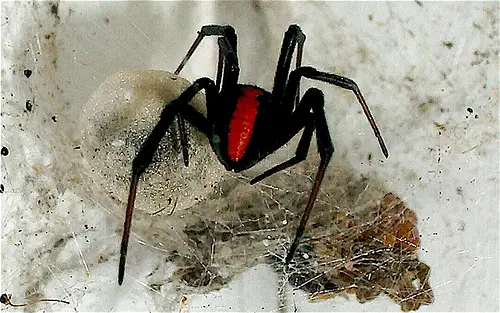Bull Ants
Bull Ants, also known as Myrmecia or Bulldog Ants are quick and aggressive predators that attack any creature they come across. These live in colonies, ruled by a queen ant. These small creatures are known for their extreme aggressiveness towards anyone who comes near their nest – they can chase strangers for as far as 10 m away from the nest, and jump 30 cm far, which equals 15 times their body size.
Most of the Bull Ants live in Australian forest territories and nearby islands, most often in coastal areas. They live in small colonies of 500-1000 specimen. and build anthills in meadows near the forests. They are also the largest ants, reaching up to 30 mm in length. Bull Ants have long legs, a massive head and nurses also have long jaws and a sting at the end of their belly, making them very capable hunters.
The social hierarchy and the organization of the colony is fairly simple, comparing to other species of ants. There are three types of Bull Ants: the queen, nurses and males. The colony is lead by the queen, who creates all offsprings. Most of the eggs lain hatch into infertile nurses, who do all the tasks for the colony. Fertile females that hatch quickly leave the anthill and try to create their own colony. The third group, males, only come to the anthill at a certain time to mate with the new queens and then soon fly away.
These predatory insects feed on other small creatures, mostly bugs. Unlike other species, the Bull Ant queen doesn’t only lay eggs, but also hunts. Each ant hunts alone and then takes the catch to the anthill. Bull Ants can manage a creature multiple times their size. The large eyes make for the best vision of all ant species and the long jaws, equipped with saw-like teeth allow the ant to easily grab and tear the prey.
Bull Ants have interesting mating habits. When a young queen is ready to mate, she flies out of the anthill where she meets hundreds of males. She chooses one mating partner and stores its sperm in a special sack inside her body. The male soon dies, after having fulfilled its only task. She uses the sperm stored inside the sack to fertilize some eggs. Fertilized eggs spawn into females, while the unfertilized ones turn into males, thus the queen can control the gender of the offsprings.
After mating, the queen loses her wings and finds a place where to begin constructing an anthill. She lays a few eggs, from which nurses spawn, who soon start hunting, expanding the nest and taking care of the eggs. One or two years later, when the colony has grown, the queen starts making males and fertile females, who would later start their own colonies.



